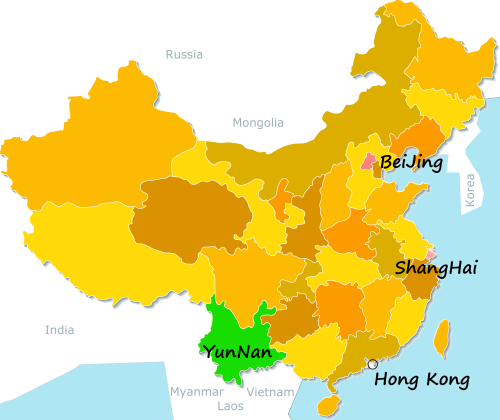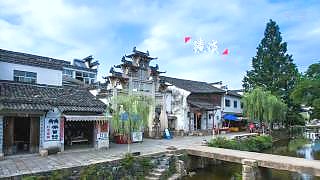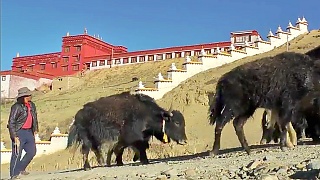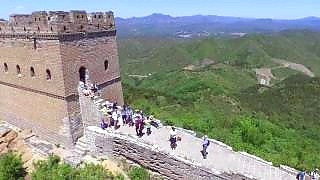
|
In BeiJing alone, there are around 200,000 places to eat, so you'll never be far from a tasty meal and there is so much to try that China is very much a foodie heaven.
Here's BeiJingBuzzz's cheat sheet of popular food dishes that you will love. Feel free to print out for personal use ...
Huo Guo (火锅) : 'Hotpot' - order what you like and cook it in a steaming broth that can be spicy, mild or both. Served with a sesame sauce topped with coriander and / or spring onion; with vinegar and soy sauce as additional options. Thinly sliced meats, all manner of vegetables, noodles, eggs, tofu and more. Be sure to try Dong Dofu (iced tofu) and Dofu skin - super delicious in Huo Guo. There are many independents but you cannot go wrong if you see a XiaBu XiaBu, a very popular restaurant chain.
Mābo Dōfu (麻婆豆腐) : soft beancurd in a spicy sauce with minced pork
BaoZi (包子) : steamed buns filled with meat or vegetables
JiaoZi (饺子) : boiled or pan-fried dumplings filled with meat or vegetables
RouJiaMo (肉夹馍) : a sandwich made with flatbread and filled with meat (most commonly pork)
CongYou Bing (葱油饼) : spring onion / scallion pancakes - a savory flatbread made with scallions and flour
ZhengJiao (蒸饺) : steamed or pan-fried dumplings filled with meat or seafood
ZongZi (粽子) : glutinous rice dumplings wrapped in bamboo leaves
GouBuLi BaoZi (狗不理包子) : steamed buns filled with meat or vegetables, popular in Tianjin
DouHua (豆花) : sweet tofu pudding
XiaoLongBao (小笼包) : steamed dumplings filled with meat or seafood and soup
Xī Hóng Shì Chǎo JīDàn (西红柿炒蛋): egg and tomato - a popular dish in Chinese cuisine, it is often a simple and comforting dish, that can be found in many Chinese home-style cooking. It is typically made by stir-frying diced tomatoes and beaten eggs together with some seasonings, such as salt, pepper, and sometimes soy sauce.
DanDan Mian (担担面): a spicy Szechuan noodle dish made with thin wheat noodles, a spicy chili oil-based sauce, and often ground meat
JianShui Zhu (建水煮): fried vermicelli noodles popular in Yunnan province
LanZhou LaMian (兰州拉面): hand-pulled noodles popular in Lanzhou, Gansu province
ReGan Mian (热干面): Wuhan hot dry noodles - a spicy dish made with thin wheat noodles, chili oil and ground meat, popular in Wuhan, Hubei province
ZhaJiang Mian (炸酱面): a dish of thick wheat noodles served with a fermented soybean paste sauce and vegetables, popular in northern China
ZhaJiangMian (炸酱面): a dish of thick wheat noodles served with a bean paste sauce, popular in northeastern China
GuoTie (锅贴): Chinese fried dumplings
MaLaTang (麻辣烫): a spicy hotpot popular in Sichuan and Chongqing
Di San Xian (第三鲜): a popular dish in Chinese cuisine, typically found in northern China, it is a type of stir-fry dish made with three main ingredients: potatoes, eggplant, and bell peppers, it is also called "Three Fresh" or "Three Precious Vegetables". It is typically stir-fried with garlic, ginger, and scallions, and seasoned with soy sauce, sugar, and sometimes oyster sauce.
GōngBǎo JīDīng (宫保鸡丁) : also transcribed Gong Bao, Kung Pao or Kung Po, is a spicy, stir-fried Chinese dish made with cubes of chicken, peanuts, vegetables, and chili peppers. A classic dish in Sichuan cuisine.
JīSī Liáng Miàn (鸡丝凉面) : Chinese Chicken Noodle Salad - Chinese chicken noodle salad features noodles tossed in a nutty savory sesame sauce and topped with shredded chicken and cucumber.
Hei Jiao Niu Liu (黑椒牛柳) - Sliced tender beef with onions, peppers and black pepper.
Huo Guo - hot pot
There are also around 6,000 McDonalds in China, plus Burger King, KFC, Pizza Hut, Subway and more. And if you like cooking from scratch yourself, you'll find many huge supermarkets plus local markets.
|

 SongZanLin Tibetan monastery, ShanGri-La, YunNan province
SongZanLin Tibetan monastery, ShanGri-La, YunNan province






